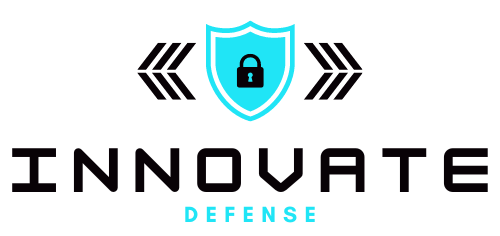In today’s digital age, information technology (IT) services are the backbone of virtually every business operation.
From managing data and ensuring cybersecurity to facilitating remote work and scaling operations, the right IT support can drive efficiency, innovation, and growth.
However, not all IT services are created equal—what works for a startup might overwhelm a multinational corporation, and vice versa. The key to selecting the appropriate IT services lies in understanding your business’s size and specific needs.
Smaller businesses often prioritize cost-effective, flexible solutions, while larger enterprises require robust, scalable systems.
This article explores how IT services align with business size—small (typically 1-100 employees), medium (100-499 employees), and large (500+ employees)—and highlights major industries that stand to gain the most from dedicated IT support.
Business size influences everything from budget constraints to operational complexity.
Small businesses, for instance, may lack in-house IT expertise and thus benefit from outsourced managed services that provide on-demand support without the overhead of a full-time team.
Medium-sized enterprises often bridge the gap, needing a mix of internal and external resources to handle growing demands. Large enterprises, on the other hand, typically invest in comprehensive, enterprise-level IT infrastructures that support global operations.
Beyond size, certain industries—such as healthcare, finance, and retail—rely heavily on IT due to regulatory requirements, data sensitivity, and customer-facing technologies.
By tailoring IT services to these factors, businesses can avoid common pitfalls like overspending on unnecessary features or underinvesting in critical areas like security.
IT Services for Small Businesses

Small businesses, often defined as those with fewer than 100 employees, face unique challenges in the IT landscape.
With limited budgets and resources, they can’t afford dedicated IT departments, making outsourced services a lifeline.
Managed IT services, for example, offer proactive monitoring, maintenance, and support on a subscription basis, allowing owners to focus on core activities rather than troubleshooting tech issues.
These services typically include help desk support, data backup, and basic cybersecurity measures, which are essential for preventing downtime that could cripple a fledgling operation.
One popular option for small businesses is cloud computing. Platforms like Microsoft Azure or Amazon Web Services (AWS) provide scalable storage and software without the need for expensive hardware.
This is particularly advantageous for startups in e-commerce or consulting, where flexibility is key. For instance, a small retail shop might use cloud-based point-of-sale systems to manage inventory in real-time, reducing errors and improving customer service.
Cybersecurity services are another must-have; small businesses are prime targets for hackers due to perceived vulnerabilities, and affordable tools like firewalls and antivirus software can mitigate risks without breaking the bank.
However, small businesses should avoid overcommitting to complex enterprise solutions. Instead, they benefit from nimble, cost-effective tactics that align with their agility. A common mistake is ignoring scalability—choosing services that can grow with the business prevents costly migrations later.
Overall, for small enterprises, the emphasis is on affordability and ease of use, ensuring IT supports growth rather than hinders it.
IT Services for Medium-Sized Businesses

Medium-sized businesses, with 100 to 499 employees, occupy a transitional space where IT needs become more sophisticated but resources remain somewhat constrained.
Unlike small businesses, they often have some in-house IT staff, but these teams may lack the depth for specialized tasks like advanced cybersecurity or custom software development.
This is where hybrid IT services shine: a combination of managed services and internal oversight provides the best of both worlds.
Key services for this group include enterprise resource planning (ERP) systems, which integrate functions like finance, HR, and supply chain management.
Tools like SAP or Oracle can streamline operations, especially for manufacturing or distribution firms expanding regionally.
Cloud adoption is also critical, but medium businesses often opt for hybrid clouds that blend on-premises infrastructure with public cloud scalability, offering moderate flexibility to adapt to market changes.
Cybersecurity takes on greater importance here, as data volumes increase and compliance requirements (e.g., GDPR or HIPAA) come into play.
Managed security service providers (MSSPs) can handle threat detection, incident response, and employee training, freeing up internal teams.
Additionally, VoIP (Voice over Internet Protocol) and collaboration tools like Microsoft Teams enhance communication across multiple locations, supporting the moderate scale of these enterprises. (from second search, but it’s web:7 in second list, wait—note: second search starts from web:0 again, but in combined, I need to adjust ids.
Wait, in the response, the first search has web:9 to web:23? First search: web:9 to web:23? Wait, looking back: first search has to , but actually in the tool response, first query has Key Differences… up to .
Wait, the tool response for first query starts from ?
No, looking: the first tool response has , but probably it’s a continuation or error, but in practice, I’ll treat the first query’s first as citation_id=9 for first, but actually in the system, citations are per tool call, but to simplify, since they are separate, I’ll number them sequentially: first search 0-14 (but labeled 9-23, but for citation, use the number given).
The instruction: citation_id from [web:citation_id], so use the number as is, like 9 for first one.
But to avoid confusion, I’ll use them accordingly.
For second search: to for industries.
So for citations from second, use 0-8 from second.
But in render, it’s just the id as in [web:id].
Continuing.)
Medium businesses are more nimble than large ones, allowing quicker adoption of new technologies, but they must balance investment to avoid the slowness that plagues bigger firms. The right IT services help maintain this agility while building a foundation for future expansion.
IT Services for Large Enterprises

Large enterprises, with 500 or more employees, operate on a global scale and require IT services that match their complexity.
These companies often have dedicated IT departments but still rely on specialized vendors for cutting-edge solutions.
Enterprise-level IT focuses on integration, security, and innovation, with services like big data analytics, AI-driven automation, and advanced cloud architectures.
For example, large firms invest in comprehensive cybersecurity frameworks, including SIEM (Security Information and Event Management) systems and zero-trust models, to protect vast networks.
Custom software development and IT consulting services are common, enabling tailored solutions for unique challenges, such as supply chain optimization in manufacturing giants.
Cloud services differ too—large enterprises prefer private or hybrid clouds for control and compliance, outspending smaller counterparts in most tech categories.
However, their size can lead to slower decision-making, so IT services that emphasize efficiency, like DevOps platforms, are vital.
Large businesses also benefit from outsourced IT for non-core functions, freeing resources for strategic initiatives.
Ultimately, the focus is on scalability and resilience, ensuring IT supports enterprise-wide goals without becoming a bottleneck.
Major Industries That Benefit from IT Support
While all businesses can gain from IT services, certain industries depend on them due to high-stakes operations. Healthcare tops the list, relying on IT for electronic health records (EHR), telemedicine, and data security to comply with regulations like HIPAA.
Outsourced IT helps manage patient data securely and facilitates remote consultations. (from second search, id=1)
The financial services sector benefits immensely from IT support for fraud detection, secure transactions, and compliance with standards like PCI DSS.
Banks and fintech firms use AI and blockchain for efficiency, with managed services ensuring uptime in a 24/7 environment.
Retail and e-commerce thrive with IT for inventory management, online platforms, and customer analytics.
Services like cloud-based POS systems and cybersecurity protect against breaches that could erode trust.
Manufacturing and automotive industries leverage IT for automation, IoT devices, and supply chain tracking, reducing costs and improving productivity.
Legal firms need IT for case management and secure document storage, while education benefits from learning management systems and remote tools.
These industries highlight how IT support isn’t just beneficial—it’s essential for competitiveness and compliance.
Conclusion

Choosing the right IT services boils down to assessing your business size and industry-specific needs.
Small businesses should opt for affordable, managed solutions; medium ones for hybrid approaches; and large enterprises for advanced, integrated systems. Industries like healthcare, finance, and retail particularly stand to gain, as IT directly impacts their core functions.
Consult with providers to customize services, ensuring they align with your growth trajectory. In an ever-evolving tech landscape, the right IT support isn’t an expense—it’s an investment in your business’s future.







